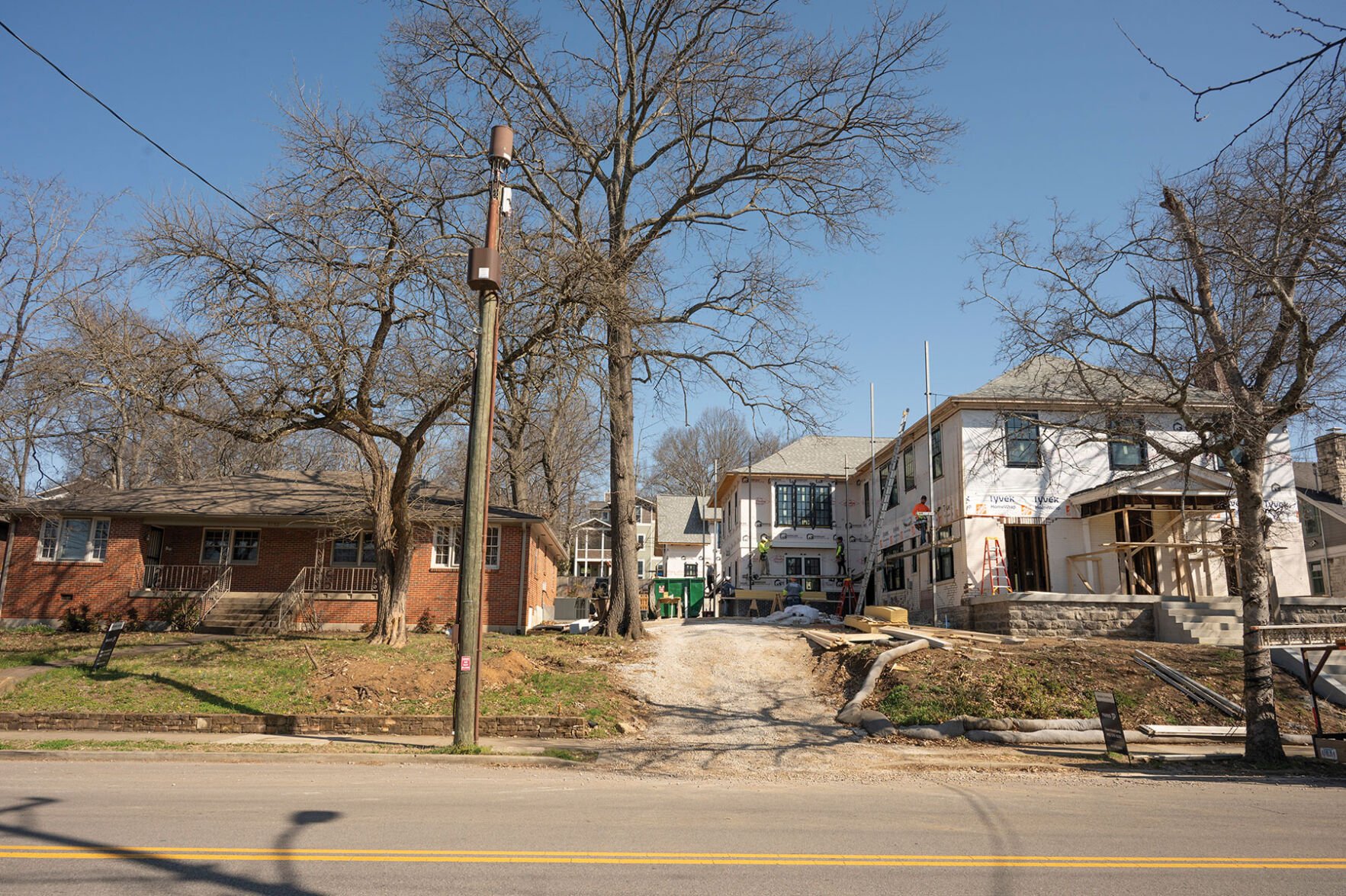New reports have begun to circulate among city lawmakers and planners that set the table for major housing reforms. Conclusions describe a city lacking sufficient supply and housing diversity, a problem attributed to limited and outdated zoning restrictions ripe for reform. City planners are expected to deliver two more major studies — a unified housing strategy and an ecological conservation report — as well as formal policy recommendations to the Metro Council in June.
Councilmembers, led by first-term reps Rollin Horton and Quin Evans Segall, attempted to broaden permissions for higher-density building across the city last year. The legislation — sweetly termed Nashville’s Essential Structures for Togetherness, or NEST — met fierce opposition from single-family neighborhoods and scored a few limited successes. Sponsors withdrew an ordinance to allow multifamily residences to be built by right in many areas currently zoned for single-family homes, pending further study — namely a Housing and Infrastructure Study expected the following year.
Density, housing affordability discussion not going away ‘anytime soon,’ says Quin Evans Segall
“We’re never going to have community if every time we tear down a duplex or a smaller-scale home we build a 6,000-square-foot multimillion-dollar home,” Evans Segall told Scene sister publication the Nashville Post early last year. “A variety of housing [and] a variety of neighbors is what creates that community, and it’s what we all are craving in Nashville right now.”
The report’s initial findings landed last month along with an executive summary. Though still tagged as draft documents, the Housing and Infrastructure Study’s recommendations signal a coming sea change for city codes and zoning meant to induce building amid an urban housing shortage. In addition to specifics, like a recommendation to allow taller buildings with single-egress stairs (a proposed NEST ordinance), the study targets zoning-restricted density.
“Looking ahead to the next ten years, Nashville’s current zoning code and zoning map are unlikely to accommodate the amount of housing Nashville will need,” the summary states plainly as its first “key finding.” It revisits the point several times.
“The current base zoning districts are out of date,” the summary states, later adding particular emphasis on higher density. “Nashville should update its zoning code to accommodate these kinds of smaller footprint buildings.”
Veteran Councilmember At-Large Burkley Allen, a longtime proponent of detached accessory dwelling units (DADUs) on single-family lots, added her own zinger in the study’s online comment section. “We are losing our small 1940’s ranches and attic apartments that have been entry points into the neighborhood in the past,” she wrote. “We do not need to replace them with 5,000 square foot homes with no yard.”
Another study — commissioned as a third-party view on the city’s approach to low- and mid-rise multifamily development colloquially known as “middle housing” — returned its own definitive analysis. Nashville paid Interval LLC, a one-man consultancy run by Memphis and Shelby County planning director John Zeanah, for the opinion.
Development has become concentrated along corridors and in low-income areas
“Among Metro Nashville’s regulatory environment there are numerous opportunities to roll back restrictions to allow more variety of housing,” reads Zeanah’s report. “This memo includes findings from a variety of codes and standards but finds that the zoning code provides the most opportunity for reform to begin to enable middle-scale housing to be built in Metro Nashville. Though it is a critical first step, updating the zoning code should only be the start. Barriers in the fire codes, building codes, and stormwater regulations can be just as vexing, particularly for developers trying to finance a project.”
Infrastructure updates, too, can facilitate more and faster density, the report finds. While furnished as technical analyses, both reports reference political considerations more relevant to the councilmembers tasked with achieving the recommended changes. Zeanah mentions the “political friction often associated with adding more units to a lot in exclusively single-family zoning districts.” A generalized concern for residents who “worry that changes mean their own neighborhoods are no longer for them” hangs over the Housing and Infrastructure document, which cautions that development has often been “fraught for neighbors, reasonably concerned about how change may affect their quality of life.”
Urgency for housing has become such a slippery political issue as it directly reflects the broad range of realities experienced across Nashville. In the same city, young families live between cars and hotel rooms while empty-nesters tend to single-family homes with two or three empty bedrooms. Makeshift homesteads built from tents and plywood under I-24 are less than a mile from the elegant Victorian mansions on Russell Street, though these residents live worlds apart.
Some call for dense, walkable blocks bustling with new restaurants and businesses as others cling to the spacious comforts of familiar neighborhoods that they bought into decades ago. New building — a physical manifestation of the changing city’s recent boom times — has also faced organized opposition from neighbors protecting specific qualities that make up their shared corner of the world. Now, armed with market analyses and executive summaries printed on letterhead, planners and lawmakers are preparing to tinker with a housing market that everyone believes is out of whack.







